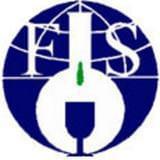本文系Journal of Future Foods原創編譯,歡迎分享,轉載請授權

近日,愛爾蘭農業與食品發展部Teagasc國家食品研究中心Elham Alehosseini (第一作者)和繆松教授(通信作者)等在國際食品領域Top期刊
Journal of Future Foods(Q1,IF:7.2)在線發表了學術文章“Formulation factors influencing the production of dairy-free cheese alternatives”。

近年來,在食品專家的努力下,飲食中的蛋白質來源正在迅速變化。基于植物蛋白或實驗室培養蛋白的新產品越來越多地被引入消費者市場。然而,食品行業在創造天然、創新、易得且營養豐富的無乳替代品方面面臨著新的挑戰。設計具有良好營養成分、生物利用度和可消化性的無乳奶酪替代品需要深入了解植物源成分的分子特性、其結構組裝方式及它們在最終產品理化性質和感官特性中的作用。也意味著基于對植物性原料特性的深刻認知,并通過對分子間相互作用的智能化調控,這些原料可以被用于生產在特性上與乳制品相當的無乳制干酪替代品。因此,本綜述旨在綜合當前關于無乳制干酪替代品生產技術及其設計關鍵影響因素的研究進展。通過探討碳水化合物、蛋白質及其他配料之間的相互作用,以及它們在復制傳統乳制干酪功能特性與質構方面的能力,本綜述為開發高品質的無乳制干酪替代品提供有價值的見解。在這些替代品的設計中,通常采用分級分離和組織破壞等路徑。植物多糖和蛋白質表面基團數量與分布的差異,會顯著影響其與其他分子的相互作用能力。隨著植物大分子濃度、鍵合強度和交聯密度的降低,凝膠強度也隨之下降。而熱處理能夠使蛋白質解折疊并降低其凈電荷,此時疏水作用成為植物基干酪中蛋白質—蛋白質相互作用的主要驅動力。相比之下,乳制干酪的三維結構則是通過疏水相互作用、氫鍵以及鈣橋的協同作用來穩定的。

圖1 從分餾途徑和組織破壞途徑實現原料向無乳奶酪替代品的相變
奶酪在人類營養中發揮著重要作用,這也催生了對在質構和感官可接受性方面與傳統乳制奶酪相似的無乳制替代品的巨大需求。無乳制奶酪配方中所使用的成分(如水膠體、淀粉、蛋白質、膳食纖維和脂肪)以及加工工藝,對產品最終的質構與功能性有著顯著影響。因此,理解這些成分之間的相互作用,對于優化無乳制奶酪替代品的質量至關重要。尤其是,蛋白質網絡在質構形成中起著核心作用,而缺乏合適的蛋白質網絡常導致植物基奶酪與乳制奶酪之間存在顯著差異。此外,奶酪基質中分子間的相互作用受環境條件、分子特性、生化過程以及加工技術等多種因素影響。與乳制奶相比,植物奶的凝固效率較低,這為生產帶來了更多復雜性。植物生物大分子的相互作用,尤其是它們的交聯行為,決定了產品的質構、流變特性和穩定性。碳水化合物因其分子性質和功能的多樣性,必須經過合理選擇與優化才能實現理想的質構。使用蠟質淀粉與蛋白質的組合可改善熔融性能,而乳化劑、鹽類及抗菌劑對于提升感官質量、安全性和保質期同樣不可或缺。營養素的微膠囊化也為植物基奶酪替代品的營養強化提供了可行策略。通過優化配方、調整固態脂肪含量和脂肪比例,制造商可以提升質構、可熔性以及整體消費者接受度。
進一步的研究有必要深入解析無乳制奶酪替代品中的分子相互作用與結構,并探討它們與感官及理化特性之間的關系。重點研究方向包括改善蛋白質網絡、優化植物奶的凝固過程以提升質構和功能性。此外,通過優化碳水化合物、脂肪和蛋白質的配方,使其更好地模擬乳制成分,并探索新的微膠囊化技術、乳化劑和凝固劑,將有助于提升產品質量、穩定性和營養價值,從而滿足消費者需求并確保市場成功。
第一作者

Elham Alehosseini博士于2021年在伊朗的Gorgan University of Agricultural Sciences and Natural Resources獲得博士學位,目前獲得瑪麗居里博士后獎學金資助項目 (MSCA Postdoctoral Fellowship),在愛爾蘭農業與食品發展部Teagasc國家食品研究中心擔任博士后。她主要的研究方向為設計植物基奶酪替代品,致力于解決學術研究和工業生產發展之間的差距。以第一作者發表SCI文章10余篇。
通信作者
繆松,教授,現為愛爾蘭農業與食品發展部Teagasc國家食品研究中心終身高級研究員、愛爾蘭國立科克大學(UCC)和愛爾蘭國立都柏林大學(UCD)博士生導師,長期從事食品材料及貯藏加工技術領域基礎理論和應用研究,曾在愛爾蘭國家生物技術中心從事博士后研究,在荷蘭聯合利華全球研發中心任研發經理及研發專員。繆松博士自任職Teagasc國家食品研究中心以來,長期與多所高校及科研院所、跨國企業保持密切合作關系,主持或參與多項國家和歐盟項目,發表SCI研究論文250余篇,擔任
Journal of Future Foods
Agricultural Products Processing and Storage
Frontiers in Nutrition等期刊副主編,
Food Science and Human Wellness
Food Science and Nutrition
Drying Technology
Applied Food Research
Foods等多種國際食品期刊編委;2021年以來入選全球前2%頂尖科學家榜單,2024年科睿唯安(Clarivate)高被引科學家,榮獲2024年度“歐洲華人十大科技領軍人才”稱號;主要研究方向為:食品物性材料學,食品干燥與造粒,粉末技術,益生菌和活性分子包埋,食品結構及傳遞體系設計,食品加工與功能性,乳品技術以及植物基功能食品配料等。
Formulation factors influencing the production of dairy-free cheese alternativesElham Alehosseinia, Paul L.H. McSweeneyb, Song Miaoa*
aTeagasc Food Research Centre, Moorepark, Fermoy, Co, Cork, P61 C996, Ireland
bSchool of Food and Nutritional Sciences, University College Cork, T12 Y337, Ireland
* Corresponding authors.
Abstract
Recently, with the efforts of food specialists, protein sources in the diet is rapidly changing. Consequently, novel products based on plant proteins or lab-grown proteins are increasingly being introduced to consumers. However, the food industry is facing new challenges in creating natural, innovative, accessible, and nutritious dairy-free alternatives. Designing dairy-free cheese alternatives with beneficial nutritional profiles, bioavailability, and digestibility requires a thorough understanding of the molecular characteristics of plant-derived ingredients, their structural assembly, and their role in physicochemical and sensory properties of the final product. In other words, with a deep knowledge of the nature of plant-based ingredients and the intelligent control of intermolecular interactions, these ingredients can be used to produce dairy-free cheese alternatives with the same characteristics as dairy products. Therefore, this review aims to synthesize current knowledge on production techniques and key factors influencing the design of dairy-free cheese alternatives. By examining the interactions between carbohydrates, proteins, and other ingredients, as well as their ability to replicate the functional and textural properties of traditional dairy cheeses, this review provides valuable insights for the development of high-quality dairy-free cheese alternatives. In the design of these alternatives, fractionation and tissue disruption routes are employed. The difference in the number and distribution of their surface groups has a significant effect on ability of plant polysaccharides and proteins to interact with other molecules. Gel strength decreases with decreasing plant biopolymer concentration, bond strength, and cross-linking density. While heat treatment can unfold proteins and minimize their net charge, the hydrophobic attraction becomes the primary driver of protein-protein interactions in plant-based cheeses. In contrast, the 3D-structure of dairy cheeses is stabilized through a combination of hydrophobic interactions, hydrogen bonds, and calcium bridges.
Reference:
ALEHOSSEINI E, MCSWEENEY P L H , MIAO S. Formulation factors influencing the production of dairy-free cheese alternatives[J]. Journal of Future Foods, 2025. DOI:10.1016/j.jfutfo.2024.10.013.

文章翻譯由作者團隊提供
編輯:龔藝;責任編輯:梁安琪
封面圖片來源:攝圖網
特別聲明:以上內容(如有圖片或視頻亦包括在內)為自媒體平臺“網易號”用戶上傳并發布,本平臺僅提供信息存儲服務。
Notice: The content above (including the pictures and videos if any) is uploaded and posted by a user of NetEase Hao, which is a social media platform and only provides information storage services.

 北京
北京






















































